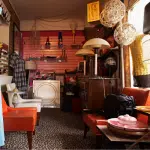From the ashes: Fort McMurray people share stories seven months after the fire
It’s been more than seven months since a massive wildfire swept through the northern Alberta city of Fort McMurray, displacing more than 80,000 people and destroying more than 2,400 homes and businesses. The fire has been selected by senior editors as Canada’s news story of the year for 2016. As part of its ongoing coverage of the disaster, The Canadian Press has checked back with several people who lived through the fire to see what life has been like since.
WEARING DOWN
When asked how he is doing, Farid El-Hayouni sighs.
“The beast” consumed the house he shared with his wife, three sons and parents, as well as many other homes in Fort McMurray’s Stone Creek neighbourhood.



